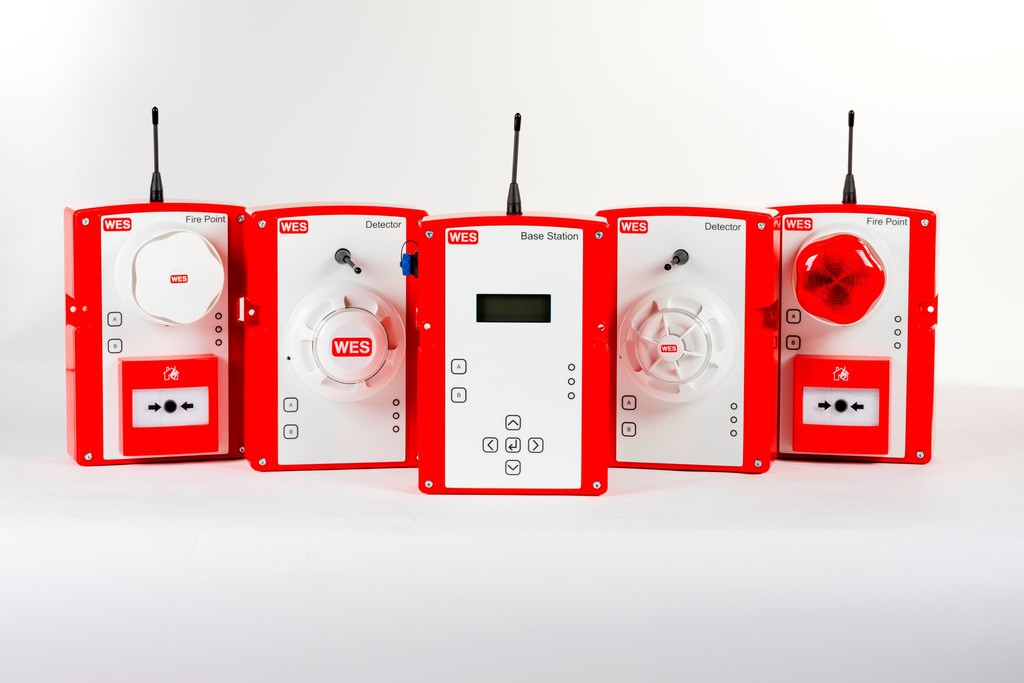
Kelly Rose
Editor

Kelly Rose
Editor
Fire can break out on most construction sites and according the insurance industry there are 104,000 each year. Not only can people be injured or worse, but fires can also be financially devastating to the firms involved. Paul Henson, sales & marketing director at Ramtech Electronics, offers a guide to the legislative background and standardised requirements for fire alarm systems used on construction sites.
A fire alarm system is essential on construction sites especially as they become more complex and have large quantities of combustible materials present. Add to this the increasing number of high rise and timber framed structures and you have a potentially dangerous combination of personnel working in high or remote locations, surrounded by materials and hot trades that can easily result in a fire.
With this in mind, all responsible organisations need to be certain that the products they use to protect their workforce and assets from fire on construction sites are effective, reliable and compliant with the appropriate legislation. When it comes to fire safety, the UK’s construction industry is covered by a number of laws, guidelines and codes of practice, including:
All of these set out fire safety requirements in relation to their particular focus, and each specifies that an appropriate fire alarm system must be used. These guidelines form a comprehensive set of best practice indicators for the use and installation of fire safety systems in the construction industry.
Meeting EN 54 requirements
In addition, the Construction Products Regulation (CPR), which came into force in 2013, says that fire alarm products sold in the EU must be tested and independently certified against Harmonised European standards. In the case of fire detection and fire alarm products, that standard is EN 54.
In terms of ensuring that the fire detection and alarm products that you choose comply, it must be certified to the parts (there are 31 in total) of EN54 which detail the particular engineering, manufacturing and testing requirements for each different type of component or product within the system. For example, Part Eleven deals with the technical requirements for manual call points while Part Three deals with those for sounders.
What to ask your supplier
Generally speaking a product must be marked with the CE mark for it to be sold in Europe. The CE mark is a declaration made by the manufacturer that the product complies with all appropriate European Directives on the date that the product is sold.
For some products the manufacturer can self-declare that the product complies, but in the case of the CPR and EN 54 for fire detection and alarm products they must be independently tested to the appropriate standard by a recognized test house.
EN 54 specifies an extremely robust set of tests for each type of unit, which may form part of a fire detection and alarm system. These tests must be undertaken in a fully-approved nominated testing house. The tests are designed to ensure that fire alarm and detection products will perform safely under all conditions that the product can be reasonably expected to experience, so the testing phase is exhaustive.
When it comes to ensuring that a supplier is offering a fully compliant fire alarm system you simply need to ask for a Declaration of Performance for each type of unit within the system and always check the CE mark on the product.
Staying within the law
When it comes to your fire alarm and detection system compliance, there are really only a couple of simple things to bear in mind. That is it should be independently tested to EN54 and it must be CE marked. By doing this you will ensure the system you use is properly tested and certified as compliant with the most recent and stringent legislation and standards.
The use of a fire alarm system is mandatory in completed buildings, so logically it’s appropriate to use them for the higher risk environment of a construction site. As a result, more construction firms are choosing EN54 compliant wireless fire alarm systems because of their ease of installation and usability.


Ramtech House
Castlebridge Office Village
Nottingham
NG7 1TN
UNITED KINGDOM
0115 957 8282